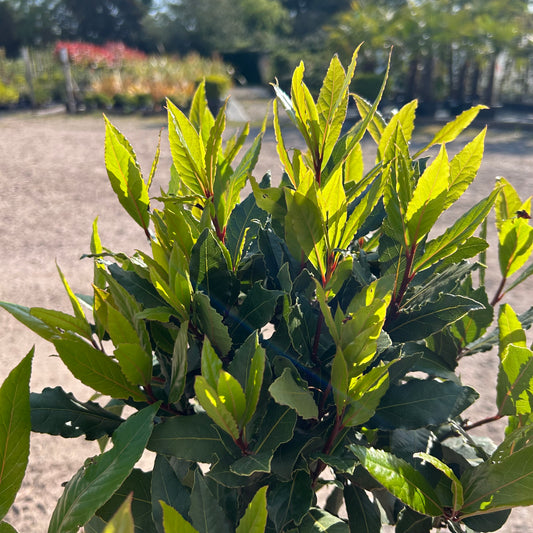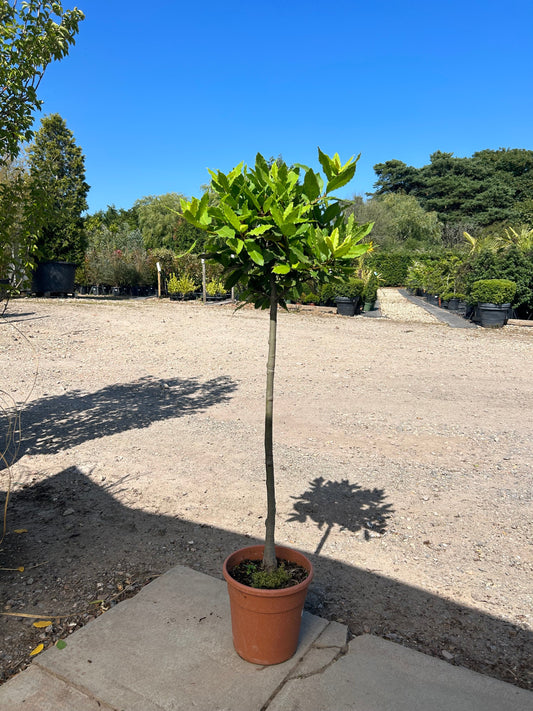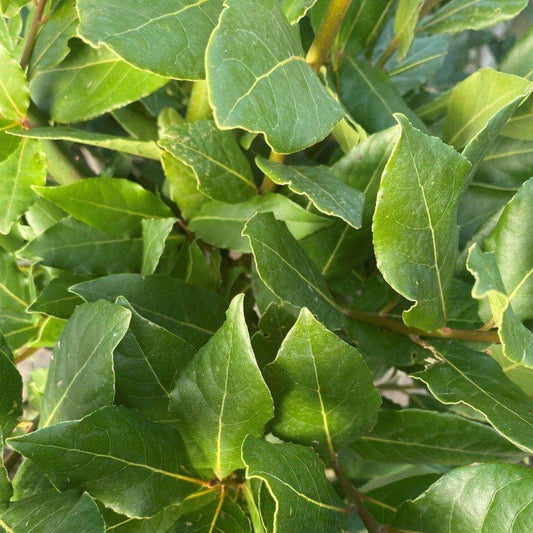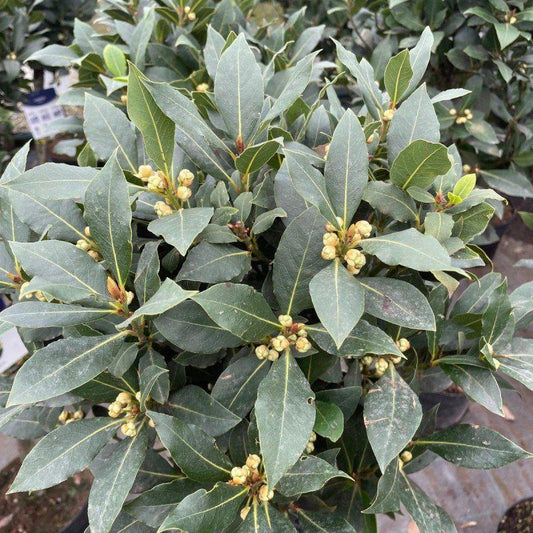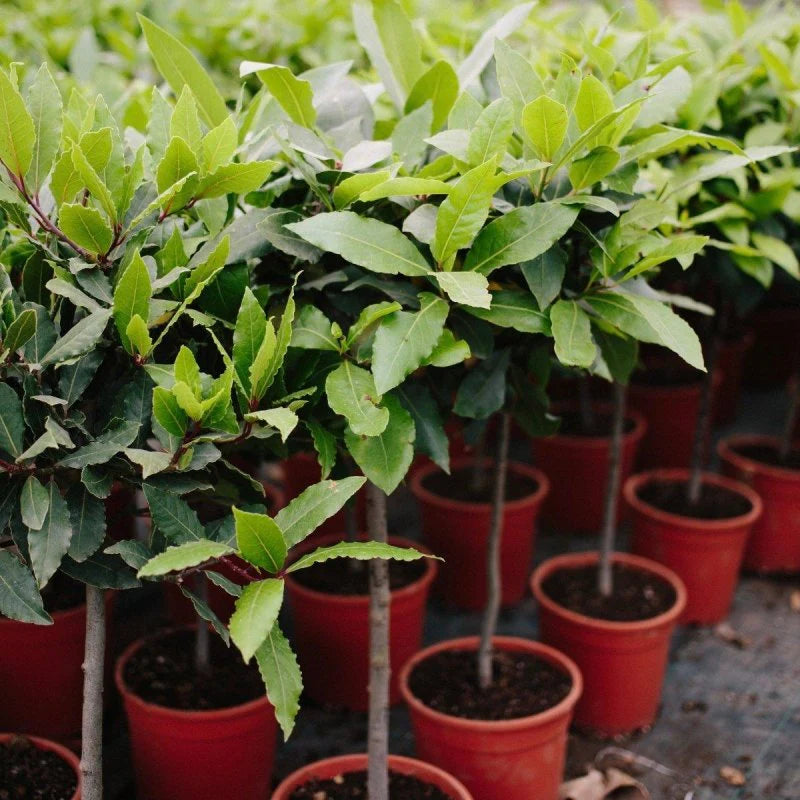Laurus nobilis, commonly known as bay laurel or the bay tree, adds a touch of Mediterranean flair to any garden in Britain.
Growing Laurus nobilis is not only achievable but also rewarding. It thrives in various conditions and offers aromatic leaves that elevate culinary dishes. This evergreen shrub has been cherished since ancient times, making it a staple in herb gardens and a favourite among gardeners looking to infuse their plots with rich, fragrant foliage.
Incorporating bay laurel into a garden allows for both aesthetic beauty and practical use. The glossy, green leaves can be harvested for a variety of recipes, from soups to stews, adding depth of flavour.
With the right care and understanding of its needs, any gardener can nurture this resilient plant. This creates a delightful herb garden that reflects the sunny vibes of the Mediterranean.
Whether a novice or an experienced gardener, growing bay laurel can be a fulfilling experience. This article will explore essential cultivation tips, common challenges, and how to ensure a thriving Laurus nobilis in any British garden.
Key Takeaways
- Laurus nobilis is a versatile herb that thrives in British gardens.
- Proper care enhances growth and flavour in culinary dishes.
- Understanding its needs helps prevent pests and common issues.
Understanding Laurus Nobilis
Laurus nobilis, commonly known as bay laurel, is a cherished evergreen shrub native to the Mediterranean region. Its aromatic leaves are not only valued for culinary uses but also carry a rich cultural significance.
This section explores the characteristics, history, and award-winning traits of this impressive plant.
Species Overview
Laurus nobilis is an evergreen tree or shrub belonging to the Lauraceae family. Known for its glossy, dark green leaves, it can reach heights of 15 to 60 feet depending on the environment. The plant produces small, fragrant flowers that develop into black berries.
These bay leaves have a unique flavour, making them a key ingredient in many dishes. They are often used fresh or dried in cooking, as well as in a traditional bouquet garni. This versatility in the kitchen highlights why Laurus nobilis is a popular choice amongst home cooks and professional chefs alike.
Cultural Significance
Bay laurel has deep-rooted symbolism that dates back to ancient Greece and Rome. It served as a symbol of victory and was often woven into laurel wreaths worn by champions and poets. The term "Grecian laurel" refers to this tradition and adds to the tree's allure.
In addition to its historical significance, bay laurel has been used in traditional medicine. It is believed to possess properties that may aid in digestion and respiratory health. Furthermore, in aromatherapy, the aromatic leaves are often employed for their calming effects, highlighting their cultural importance beyond the culinary sphere.
Award-Winning Characteristics
Laurus nobilis has received the Award of Garden Merit from the Royal Horticultural Society, recognising its exceptional qualities for gardens. The plant’s fragrant, flavorful leaves and ability to maintain a neat shape make it popular in ornamental and herb gardens.
Its adaptability allows it to thrive in various conditions, from containers to traditional garden beds. Regular pruning encourages bushy growth, adding to its appeal as a decorative feature. Gardeners appreciate its resilience and ornamental value, making it a prized addition to landscapes across Britain.
Cultivation and Care
Growing Laurus nobilis, commonly known as bay laurel, requires attention to its planting conditions, watering needs, and care practices like pruning.
Understanding these aspects will help ensure healthy and flourishing plants in gardens across Britain.
Planting Requirements
Bay laurel thrives in well-drained soil that is rich in organic matter. It prefers full sun but can tolerate partial shade, making it adaptable to various garden settings.
When planting, choose a location that avoids waterlogged conditions, which can harm the roots.
If planting in coastal gardens, ensure the area is sheltered from harsh winds but still receives adequate sunlight.
A hole should be dug twice the width of the root ball and just as deep. Mixing some compost into the soil will encourage healthy growth. It is advisable to plant in spring or autumn for optimal results.
Watering and Nutrition
Watering bay laurel is crucial, especially during dry spells. Mature plants require less frequent watering, usually every 2-3 weeks. Newly planted shrubs need consistent moisture until they establish strong roots.
Using a balanced fertiliser in spring helps promote growth. A slow-release, organic mixture is recommended, as it provides essential nutrients without chemical overload.
Avoid over-fertilising, as this can lead to weak growth. Tracking the moisture levels in the soil can help maintain an ideal balance for healthy plants.
Pruning and Shaping
Pruning bay laurel is integral to maintaining its shape and promoting dense growth. Regular trimming encourages a bushy appearance and can prevent the plant from becoming leggy.
The best time for pruning is in late winter or early spring before new growth begins.
For those interested in topiary or creating hedges, careful shaping can allow for various designs. Cutting back one-third of the plant’s height can stimulate new growth and stronger branches.
Take care to use sharp tools to make clean cuts, reducing the risk of disease. Proper pruning can also enhance airflow, keeping the plant healthy.
Propagation and Growth
Laurus nobilis, commonly known as bay laurel, thrives in various conditions, making it a versatile choice for gardeners. Understanding how to propagate this hardy shrub and how it grows will ensure success for anyone looking to cultivate it in Britain.
Propagating Laurus Nobilis
There are two main methods to propagate Laurus nobilis: cuttings and seeds.
Cuttings:
- Timing: The best time to take cuttings is in early summer.
- Selection: Choose healthy, semi-mature branches.
- Preparation: Cut 4-6 inches long using sharp shears. Remove the lower leaves, leaving a few at the top.
- Rooting Hormone: Dip the cut end in rooting hormone to encourage root development.
- Planting: Place the cutting in a pot filled with moist potting soil. Cover it with a plastic bag to maintain moisture.
- Location: Keep in a warm, shady spot until roots develop, which usually takes a few weeks.
Seeds:
If propagating from seeds, it’s important to cold stratify them first. This means refrigerating them for about six weeks to break dormancy. Once stratified, plant them in well-draining soil and keep them moist until germination.
Reaching Maturity
Bay laurels grow slowly but can reach a mature height of 2 to 5 meters in the right conditions. The shrubs prefer full sun and need well-drained soil.
Care Tips:
- Watering: They should be watered regularly, especially during dry spells, but avoid waterlogging.
- Feeding: A balanced fertiliser can promote healthy growth during the growing season.
- Pruning: Regularly prune to maintain shape and encourage bushy growth.
With proper care, Laurus nobilis will flourish and can provide culinary herbs for years to come. These mature plants are not just practical but also add beauty to gardens or patios.
Pests and Common Issues
Bay laurel is generally resilient but can face some challenges. Identifying pests and managing conditions is vital for its healthy growth. Below are key areas to focus on regarding pests and common issues.
Recognising and Treating Pests
Bay trees, or Laurus nobilis, can attract various pests. The most common ones include scale insects and aphids.
Scale insects appear as small brown or white bumps on leaves and stems. They suck sap, weakening the plant and causing yellow leaves.
Aphids, small and green, can cluster on new growth, leading to curled leaves.
For treatment, a strong jet of water can dislodge them. For severe infestations, insecticidal soap can be used to eliminate pests effectively. Regular monitoring helps catch these issues early and maintain a thriving bay tree.
Managing Common Conditions
Yellowing leaves often indicate stress in bay laurel, potentially from pests or environmental factors. Overwatering is a common issue that can lead to root rot, so proper drainage is essential.
If root rot occurs, it may require repotting with fresh soil.
Another condition to watch for is the bay sucker, which feeds on leaf sap and causes wilting. To manage this, use neem oil as a natural pesticide.
Keeping the bay tree in a well-ventilated area, away from harsh conditions, promotes its health and prevents common problems. Regular pruning can also help maintain airflow and reduce the risk of infestation.
Frequently Asked Questions
Caring for Laurus nobilis in Britain involves understanding its specific needs in a varied climate. This section addresses common queries regarding plant care, diseases, feeding, pruning, edibility, and growth expectations.
How should I care for a Laurus nobilis plant in the UK climate?
Laurus nobilis prefers a sheltered spot with plenty of sunlight. The plant requires well-draining soil to prevent waterlogging. Regular watering is essential, especially during dry periods, but care should be taken to avoid excess moisture.
What are common diseases affecting Bay Laurel in Britain and how can I identify them?
Common diseases include root rot and powdery mildew. Root rot can lead to wilting and yellowing leaves, while powdery mildew appears as a white powdery substance on leaf surfaces. Identifying these signs early can help in managing the diseases effectively.
What is the appropriate feeding regimen for a potted Bay Laurel tree?
A potted Bay Laurel tree benefits from a balanced liquid fertiliser during the growing season. Feeding every four to six weeks helps ensure it gets the necessary nutrients. It is important to reduce feeding in the winter months when the plant is dormant.
What is the correct timing and method for pruning a Bay Laurel tree in the UK?
Pruning should take place in late spring or early summer. This timing promotes healthy growth and reduces the risk of frost damage. Cutting back excessive growth can shape the tree and encourage bushier foliage.
Are there any differences in edibility among Bay Laurel leaves found in Britain?
Bay Laurel leaves are generally edible and safe for cooking. However, it is essential to ensure that the leaves are from unpolluted areas. Leaves should be fresh and healthy, as wilted or yellowing leaves may not have the same flavour or quality.
How quickly can I expect a Laurus nobilis to grow in British conditions?
Growth rates can vary depending on care and climate, but Laurus nobilis typically grows slowly.
In optimal conditions, it may reach about 30 to 60 centimetres per year.
Regular attention to its needs can help maximise its growth potential.



